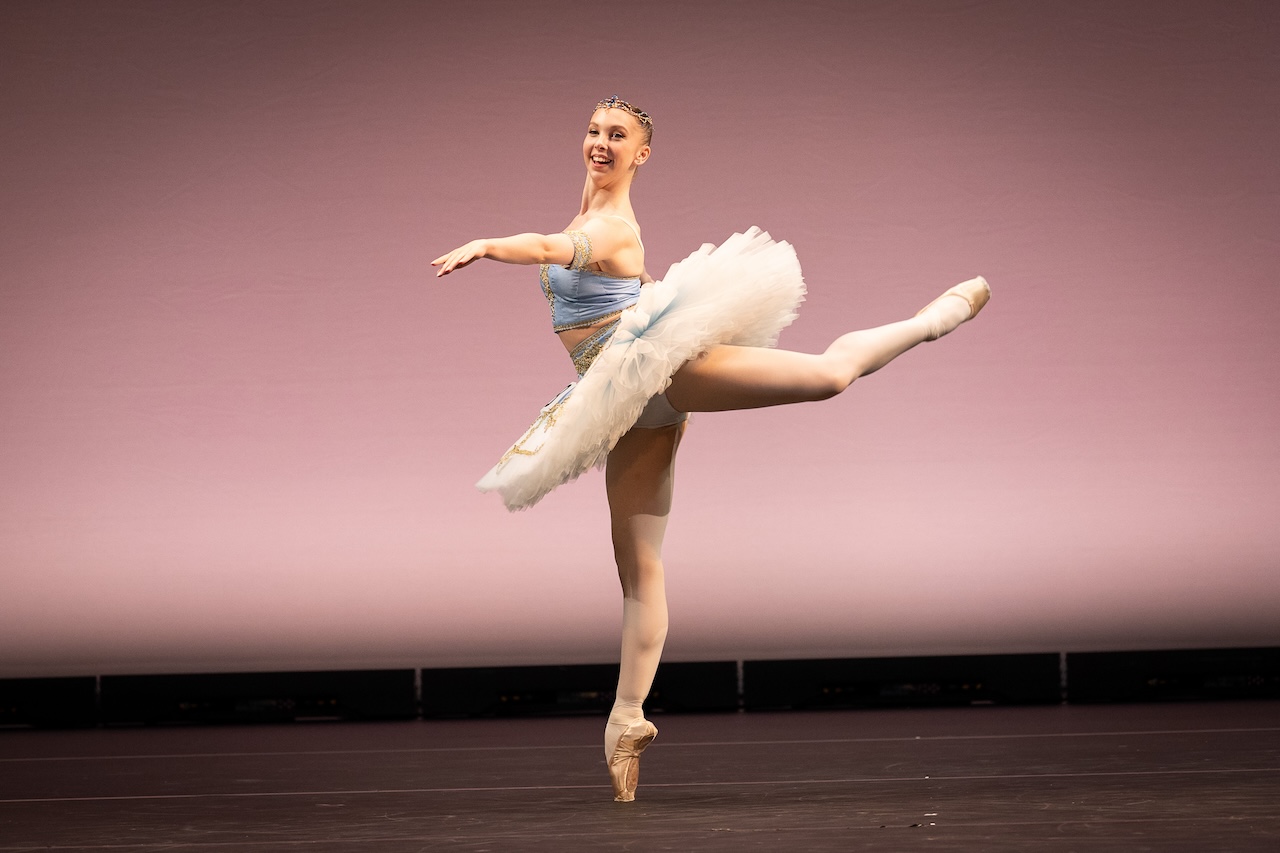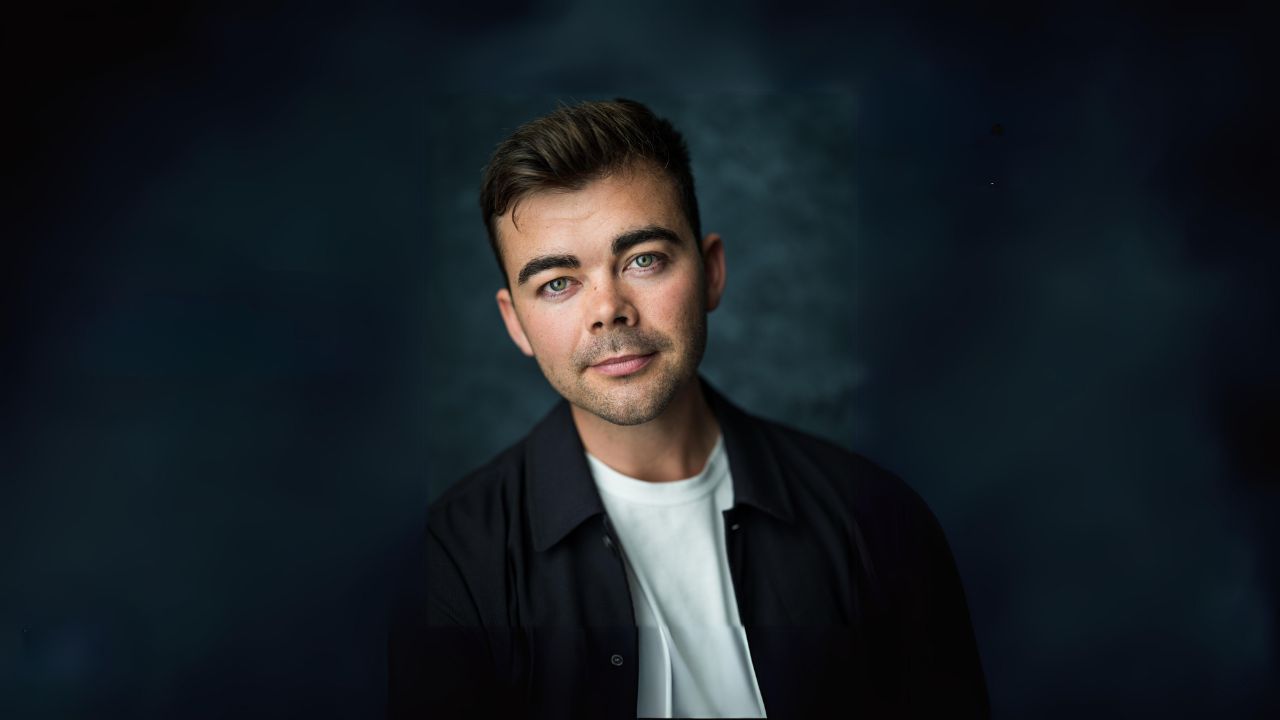Scottish dancer Antonia Maria Cramb has won the Gold medal at The Margot Fonteyn International Ballet Competition 2024, held at His Majesty’s Theatre in London on 8 September.
The Fonteyn is the pinnacle for young dancers trained in the RAD syllabus, and the final followed a week of coaching and semi-finals at the RAD’s headquarters. Over 60 dancers from 14 countries (including Bermuda, Venezuala, South Africa and Singapore) took part in this year’s competition. RAD Artistic Director Alexander Campbell congratulated all the candidates, saying, ‘it’s been a true pleasure watching you grow throughout the week, and we hope that you have made memories to be treasured forever.’
Gold medallist Antonia Maria Cramb, 18, is from Perthshire, Scotland. Trained by Kerry Livingstone and Faculty of Royal Conservatoire of Scotland, she trains at the Royal Conservatoire of Scotland. She performed her Dancer’s Own solo Tambourin, co-choreographed with Kerry Livingstone, and the second odalisque variation from Le Corsaire.
The Silver medal was won by Lydia Hough aged 18 from North Lincolnshire, UK, trained by Beverley Spencer, Sebnem Önal and Viviana Durante, currently training at English National Ballet School. Lydia also received the Margot Fonteyn Audience Choice Award.
Bronze medals were won by Alfie-Lee Hall, 18 from Cheshire, UK (trained by Denise Whiteman and Elmhurst Ballet School Artistic Staff, currently training at Elmhurst Ballet School) and Ernesto Young, 17, from Australia (trained by Hilary Kaplan and Archibald McKenzie, currently training at Alegria Dance Studios).
Ernesto Young also won the Dancer’s Own Choreographic Award for his solo Whirlwind Grace (set to Lutowslawski), while the first winner of a new Musicality Award was Christie Anderson, 20. Taught by Angelique Harris, Sayward Ten Hove and Bethany Kingsley-Garner, she trains at Art of Motion International Dance Laboratory.
All the candidates took part in coaching sessions with Isabel McMeekan, Samira Saidi and Darren Parrish, and semi-finals judged by Dame Darcey Bussell, President of the RAD, Alessandra Ferri, Artistic Director Designate of the Wiener Staatsballett and José Alves, former Senior Artist at Ballet Black. Judging the final were Bussell, Ferri and Kevin O’Hare, Director of The Royal Ballet. The choreographic and musicality awards were judged by Dame Monica Mason and choreographer Ashley Page.
Look
Finalists also premiered new variations created by The Fonteyn 2024 commissioned choreographer, Andrew McNicol. There was also a guest performance of the balcony pas de deux from Romeo & Juliet by Northern Ballet dancers Harris Beattie and Saeka Shirai.
The Fonteyn was produced by Lynn Wallis. Mayumi Hotta was the Benesh choreologist, and pianists for the final were Rebecca Leshures and Richard Norris.
After being held in London for the past two years, in 2025 The Fonteyn will be held in São Paolo, Brazil.
















